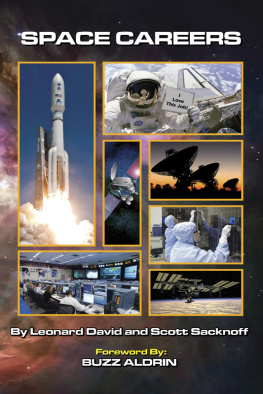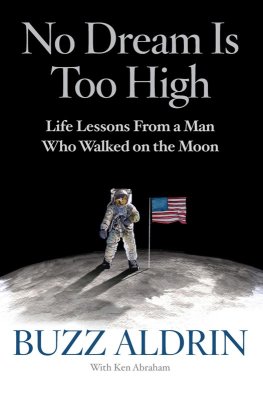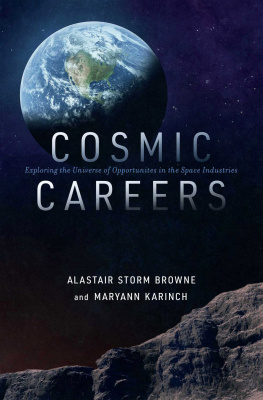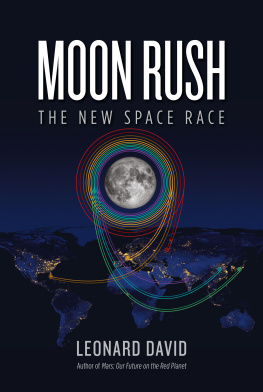Published by:
International Space Business Council LLC
P.O. Box 5752
Bethesda, MD 20824-5752
United States
Phone: +1 (703) 524-2766
Email:
Website: www.spacebusiness.com/careers
Copyright 2015 by Scott Sacknoff
All rights reserved. No part of this book may be reproduced or transmitted in any form or by any means, electronic or mechanical, including photocopying, recording or by any information storage and retrieval system without written permission from the author, except for the inclusion of brief quotations in a review. All links and URLs were valid at the time of publication.
Original Edition: First Printing 1998, Second Printing 1999
Fully Revised and Updated Edition: 2015
Printed in the United States of America
Book Cover Design: Gary Milgrom
| Photo Credits: | Clockwise from left: Atlas rocket (NASA), Astronaut Joe Allen with For Sale sign modified by author (NASA), Ground Control (NASA), Maven prior to launch (NASA KSC), ISS (ESA artist impression), Mission Control (NASA), center/Thor 7 satellite (SSL) |
ISBN: 978-1-887022-19-4 (Trade Paper)
ISBN: 978-1-887022-20-0 (e-book)
Table of Contents
(Short answers to commonly asked questions)
(Activities that make up the space industry)
(Only by understanding the past can one understand the present)
(Understanding satellites, rockets, ground operations, satellite services, remote sensing, GPS, microgravity, space science, and non-technical positions)
(How to identify the employment opportunities that are out there)
(Advice from Lockheed Martins Marillyn Hewson)
About the Authors
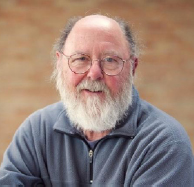
Leonard David is a space journalist who has reported on space activities for more than 45 years. Winner of the National Space Club Press Award in 2010, Leonard has served as editor-in-chief of the National Space Societys Ad Astra, Space World, and Final Frontier magazines as well as being a featured contributor to publications such as Space News, SPACE.com , Aerospace America, Sky and Telescope, and Aviation Week & Space Technology.
He has consulted with NASA, other government agencies and the aerospace community and served as director of research for the National Commission on Space, a U.S. Congress/White House study that appraised the next 50100 years of space exploration. In 2013, he coauthored, with Gemini and Apollo 11 astronaut Buzz Aldrin, the National Geographic book Mission to MarsMy Vision for Space Exploration.
Additionally, along with his wife, Barbara David, he has worked on a number of educational outreach programs developing materials that focus on space-related science projects. For more on Leonard, please visit: www.leonarddavid.com .
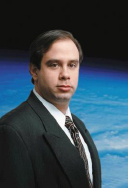
Scott Sacknoff began his career as a project engineer, developing and testing next generation Space Shuttle engine components before becoming a consultant where he focused on the commercial and business side of the industry. For more than twenty years he performed varied commercial space consulting studies and analyses for NASA, DoD, and private sector contractors as well as working in venture capital, as an entrepreneur, and in the investment sector. Today, he serves as the publisher of the history journal, Quest: The History of Spaceflight ( www.spacehistory101.com ) and manages the SPADE Defense Index (NYSE: DXS), an investment benchmark focused on defense, space, and national security www.spadeindex.com . He is an alumnus of Rensselaer Polytechnic Institute (RPI) and of the International Space University.
FOREWORD
THE FUTURE AHEAD: YOUR PATHWAY TO TOMORROW
Dr. Buzz Aldrin
Gemini 12 and Apollo 11 Astronaut
Satellite Beach, Florida

Embarking on a career in space is a challenging endeavor, one that can surely become an adventure of a lifetime. For me, personally, my experience as an astronaut drew upon skills that I had honed throughout high school, during undergraduate work at West Point, at Air Force fighter pilot school, and then at the Massachusetts Institute of Technology (MIT). Thats where I earned my Doctorate in Astronautics. My MIT thesis was on Manned Orbital Rendezvous.
But first let me talk about tenacity.
My early aim of becoming an astronaut was short-circuited. I had my NASA application first turned down because I wasnt a test pilot. But due to my strong-willed resolve to seek out a career as an astronaut, I applied again. This time, my jet fighter pilot know-how and NASAs budding interest in mastering the art of space rendezvous influenced them to accept me. And, in October 1963, I became a member of the third group of NASA-chosen astronauts. By the way, I was the first astronaut selected with a doctorate and became known to my fellow astronauts as Dr. Rendezvous.
My timing was just right for stepping into the space program. I asked myself how best to apply my experience as a fighter pilot and expertise in guidance and navigation. Back then, joining objects in space was something that was only done by computer analysis or discussed in academic circles through a paper or two. In fact, I could count on the fingers of one-hand experts in the field of space rendezvous. I took a hard look at rendezvous methods and boiled them down to simple terms, in essence, a seat-of-the-pants approach.
The merit of my rendezvous ideas gradually gathered adherence. It afforded the pilotsthe astronautsa way to have backup charts, make measurements, and assure that we were contributing to a spacecrafts flight. The essence of my rendezvous techniques was tested during Gemini, then applied to the Apollo lunar landing effort, and is still used today. I am very proud of that contributionone that gave Neil Armstrong and me the distinctive achievement of becoming the first humans to set foot on the Moon in July 1969.
For those of you just starting on a high-technology career path, I can offer some observations that may prove helpful. They have been valuable to me.
I came up with a philosophy several years ago of trying to go through life with my arms outstretched to cut a wide swath. Gather in as many things as possible into your realm of awareness. You will be surprised at what you encounter and collect.
Dont focus too narrowly. Open up. Change direction. Look at a problem from as many perspectives as enter into your mind. Add to somebodys idea or bring two people together who are working the same problem, but from different points of view. Polish your ideas as much as possible, then try them out on others. Dont be afraid to give away a little bit in order to become a cooperative person. To say you need an open mind is obvious.
During the past years, it has become clear that a young persons scientific and technical career can be fueled by a passion for science, technology, engineering, and matha combination of disciplines dubbed STEM. But let me add one more ingredient: the arts.
Science, technology, engineering, arts, and math (STEAM) power is the way to go. And through my Buzz Aldrin ShareSpace Foundation I strongly support the belief that by incorporating arts into the STEM equation even greater results will be achieved by people at all stages of their education.

